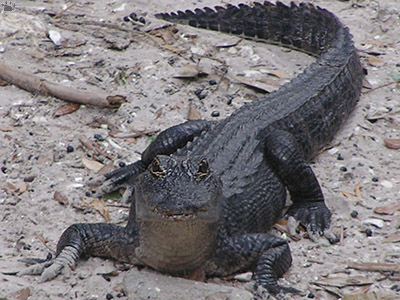
American alligator (Alligator mississippiensis), Harris Neck National Wildlife Refuge, Georgia.
Crocodiles part 2: American Alligator
Once almost extinct, the American alligator is now common in the Southern United States, from Virginia to Texas. An estimated one million gators now live in Florida alone. Thanks to protection measures, it became so numerous that regulated hunting is being conducted in some states.
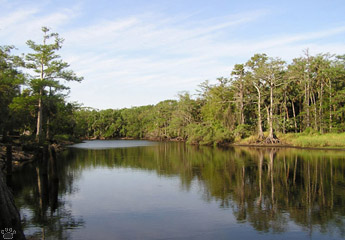
Alligator habitat, Fisheating Creek Wildlife Management Area, Florida. |
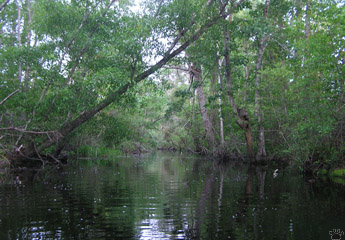
Alligator habitat, Black River, North Carolina. |
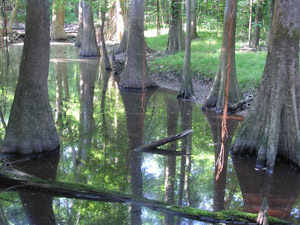
Alligator habitat, Congaree National Park, South Carolina. |
American alligator can survive anywhere from large lakes and rivers to tiny sinkholes and irrigation ditches. |

Alligator in a hole, Fisheating Creek WMA, Florida. |
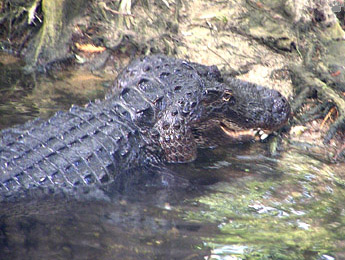
Alligator digging a hole, Big Cypress National Preserve, Florida. |
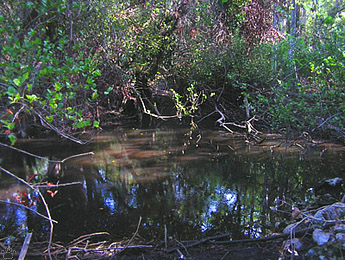
Alligator hole in a hammock (small island of tropical forest), BCNP. |
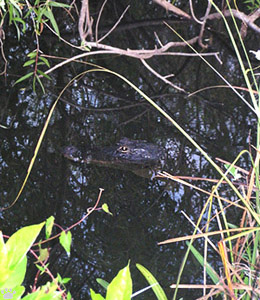
Alligator in a hole, BCNP. |
In places where water levels drop too much during the dry season, generations of alligators dig small ponds, locally called gator holes. These ponds provide water for local wildlife, from salamanders and insects to deer and Florida panthers. Over thousands of years, soil around these ponds gets so rich that some of them become surrounded by islands of tall forest among low scrub or savanna. |

Alligator in a hole, Fisheating Creek WMA, Florida. |

Basking alligators, Everglades National Park, Florida. |
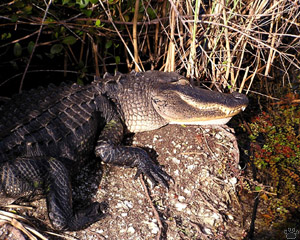
Basking alligator, ENP. |
Millions of people see them in places like Everglades National Park, where they spend days basking in the hot sun and almost never moving. |
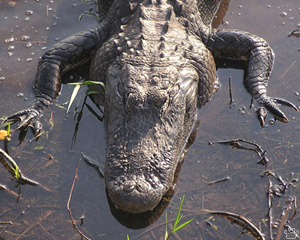
Drying nail polish, ENP. |
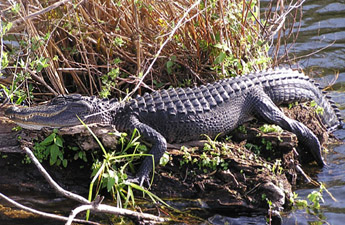
Basking alligator, ENP. |
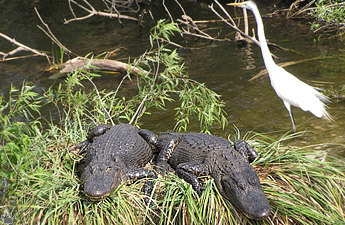
Basking alligators and a great white egret (Egretta alba), ENP. |
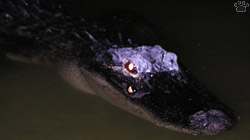
Alligator in a swamp at night, ENP. |
At night it's a different story. Alligators are efficient hunters, capable of ambushing anything that moves, in the water or on land. They can often be seen at forest trails near water, waiting for passing animals or tourists. |
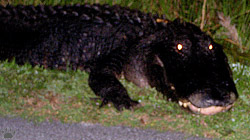
Alligator on a roadside at night, ENP. |
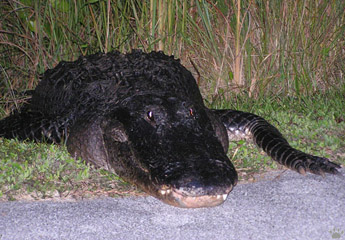 |
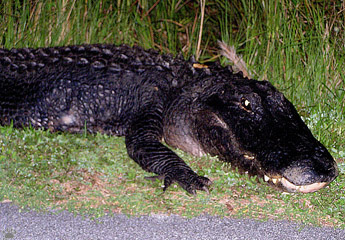 |
| Alligators in roadside ambushes, ENP. |
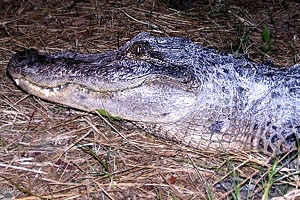
Alligator in a trailside ambush, ENP. |
Some alligators live in brackish water, like these two salt-crusted trailside hunters at the edge of a mangrove forest. |
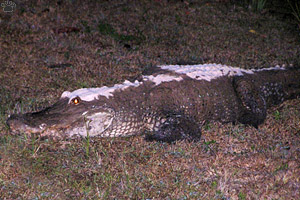
Alligator in a trailside ambush, ENP. |
 |
 |
| Alligators, Arthur R. Marshall Loxahatchee National Wildlife Refuge, Florida. |
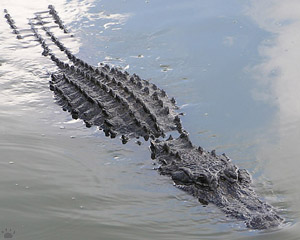
Alligator in a city canal, Miami, Florida. |
Unlike crocodiles, alligators are subtropical, not tropical, animals. In tropical southern Florida they grow very slowly, and can die of overheating. |
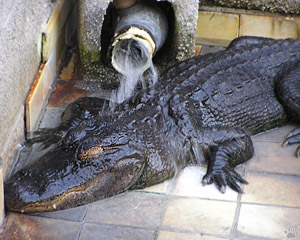
Taking shower on a hot day. Gatorama, Florida. |
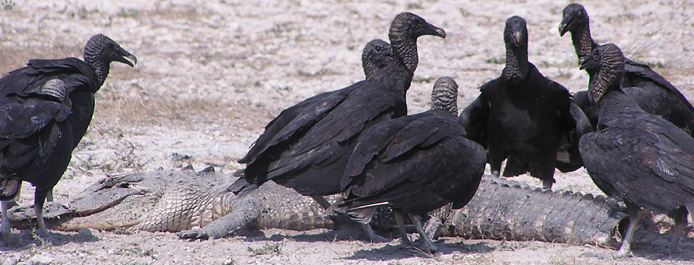
Spring drought of 2006 was a difficult time for Florida alligators. Many died in dry pools, and there were 3 fatal attacks on people. Miccosukee Indian Reservation, Florida. |
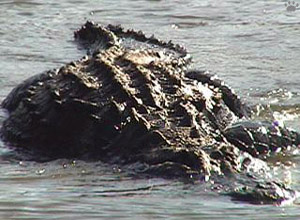
Very large male alligator, Okefenokee Swamp, Georgia. |
Under optimal conditions, American alligators can live for over 40 years. Males occasionally grow to more than 5 m/17'. |
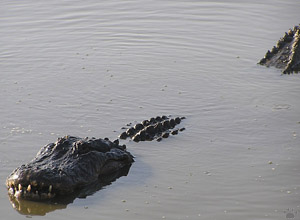
This large male has attacked people a few times. Gatorama, Florida. |
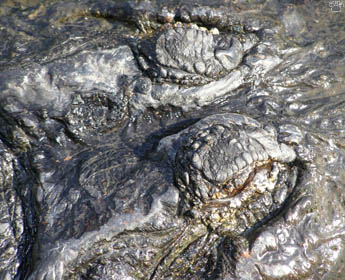
Very old alligator, Atchafalaya River, Loisiana. |
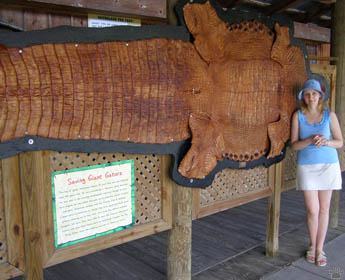
Skin of a large alligator, Gatorland, Florida. |

Very large male alligator, Okefenokee Swamp, Georgia. |
Under optimal conditions, American alligators can live for over 40 years. Males occasionally grow to more than 5 m/17'. |

This large male has attacked people a few times. Gatorama, Florida. |
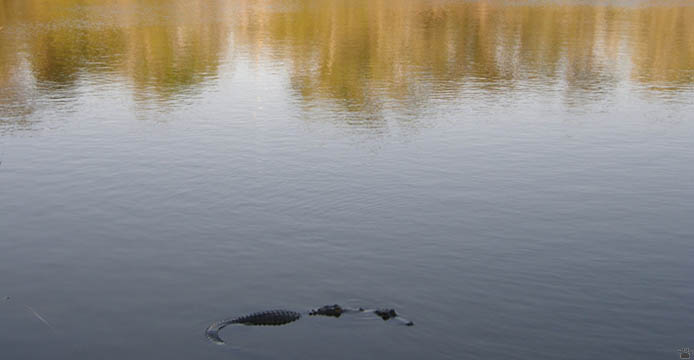
Courting Florida Keys alligators, Key Deer National Wildlife Refuge, Florida. |

Florida Keys alligators, KDNWR, Florida. |
A tiny population of dwarf alligators lives in ponds and sinkholes on three islands in the Florida Keys. |

Florida Keys alligator, KDNWR, Florida. |
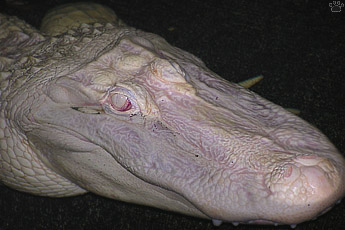 |
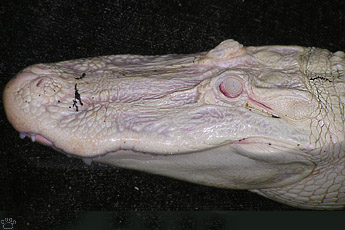 |
| White alligator, St. Augustine Alligator Farm Zoological Park, Florida. |
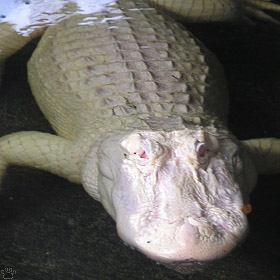
Albino alligator, SAAFZP, Florida. |
The so-called white alligators are either true albinos with red eyes, or partial albinos (leucistics) with blue eyes. They mostly originate from a group of white hatchlings discovered in Louisiana in 1987. |

Albino alligator bellowing, SAAFZP, Florida. |
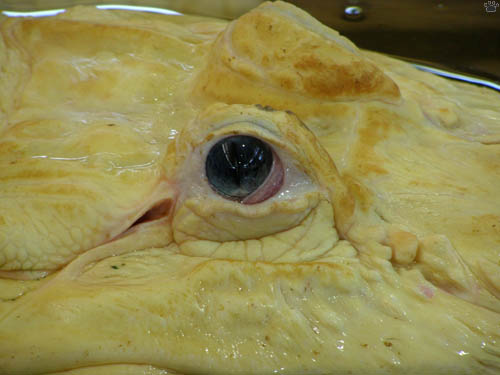
Leucistic alligator, Gatorland, Florida. |
Part 3: American Alligator (continued)
Back to Part 1
Home
|